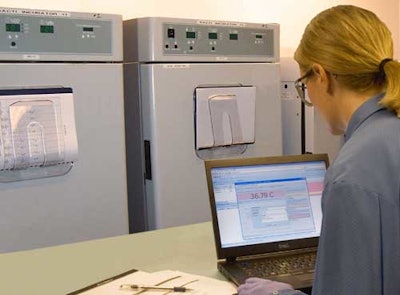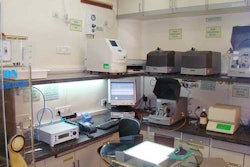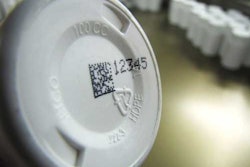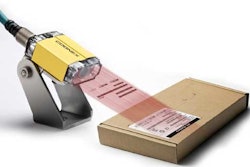
The 10-step guide is designed to help pharmaceutical processors, blood and tissue banks, clinical laboratories, medical device manufacturers, research hospitals, and other GxP facilities that may receive public criticism warning letters respond quickly and appropriately within the permitted 15-day window. Proper FDA 483 letter response is critical to both help in reputation repair and for remediation actions to assure a quality process and patient safety.
No cGMP manufacturer wants to receive a Form 483 letter (Notice of Inspectional Observations). In such stringently controlled industries as pharmaceutical/biotechnical development, manufacturing and warehousing, receiving a list of deficiencies can feel like a blow to your quality system. Worse, with the 2009 increase in enforcement staff (1) and the September 2009 change to the response time--now 15 days--the FDA appears to be ramping up its enforcement mandate. (2)
The following article shows three excerpts from some of the more common “observations” noted in Form 483 Letters during 2008-2009. (The names have been left out in this article, but are a matter of public record). (3) Each of these deviations involved environmental conditions (temperature, humidity, etc.) in a variety of cGMP settings; they range from failure to properly validate containers for Human Cell & Tissue Products to a lack of temperature records in an aseptic processing area of a drug manufacturing facility. None of the deviations excerpted here are unique, but all are avoidable.
After the excerpts, we'll outline some best practices of a 483 response, providing a 10-point checklist that should make that 15-day time limit more manageable, and some links for further research. Finally, we'll look at ways to simplify and automate monitoring, alarming and reporting on FDA regulated environments. Options range from low-tech manual methods, to hybridized systems that combine written and electronic methods of documentation, to fully automated systems.
Sample deviation #1 (to a contract pharmaceutical manufacturer):
“Requirements for stability testing of drug products are not being met. For example, you do not have, as part of the storage condition, any documentation that stability samples are maintained at the designated temperature [21 CFR 211.166(a)(2)]; and you do not have appropriate stability data to support the four-year expiration date for the product. [21 CFR 211.166(b)]”
Sample deviation #2 (to a blood bank):
“Failure to have quality control procedures and follow those procedures for periodic tests of containers to maintain proper temperature...as required by 21 CFR 606.160(b)(5)(iv)...”
Sample deviation #3 (to a major manufacturer of OTC pharmaceuticals):
“Failure to establish and maintain procedures to adequately control environmental conditions, as required by 21 CFR 820.70(c). Specifically, temperature conditions within the aseptic processing area are not being documented to ensure such conditions are consistently within established specifications...
For example, during the inspection we observed that your firm was recording the relative humidity (RH) in the processing room, but not in the sterilization chamber. We also observed that your firm was not maintaining or reviewing the temperature recorder charts generated during your sterilization process of [product x]...”
There is no regulatory requirement to respond to a 483. According to the agency, they are merely “inspectional observations, and do not represent a final agency determination regarding your compliance.” Sort of like an offer to help you with your compliance concerns. However, not responding quickly and carefully will most likely result in further investigation. In addition, all Warning Letters are posted on the FDA's site.
10 1•„2 tips for the right response
Your initial response must establish credibility, it must demonstrate acknowledgement of the observations and an understanding of the specific requirements referenced, and it must show that your facility is committed to corrective actions, any and all.
You can show commitment by working cross- departmentally; include a statement from all relevant department heads that briefly but specifically addresses each observation. Each observation needs to have a corrective action--either planned or accomplished--and it must be feasible and deliverable within a predetermined timeframe.
Here are some tips, then, for responding appropriately to 483 letters:
1. Get your response in on time and in writing. You have 15 days, so ensure that final proofing and substantive editing is done at least by day 10.
2. In the first paragraph of the response letter, be explicit in your understanding of and desire to comply with FDA regulations.
3. Respond individually to each item that was addressed in the Warning Letter. Be specific. Do not try to solve all issues in one paragraph or your response may be rejected, prompting further action from the FDA.
4. Respond by importance - that is, respond individually to items most likely to impact product quality.
5. Be detailed yet concise in each response. Outline how each deficiency will be corrected, and when, rather than how the deficiency came to be. Provide documentation of a corrective action commitment from the person responsible for it.
6. Use positive statements; avoid language that implies fault. Address each item in the form 483 as an opportunity to fine-tune the quality and compliance systems and personnel.
7. Include reference to how you will be forwarding evidence to support the correction.
For example, (Company X) will use (Company Z's) validated monitoring and alarming system to provide reports on temperature recordings taken at 10-minute intervals month-by-month. Product specifications and protocols of any new systems can be provided or offered in support of the corrective action plan.
8. If the inspector noted something that you feel was an isolated incident, document this fact and note it in your response. Be sure your data is complete and accurate. If you find some of the observations were in error after receiving the 483, there is a formal dispute resolution process outlined in the agency's "Guidance for Industry--Formal Dispute Resolution: Scientific and Technical Issues Related to Pharmaceutical CGMP. (5)
9. Be proactive. Reassess your internal compliance programs--Why were 483 deficiencies not detected internally? Mention this in your response letter, noting your commitment to QC/QA audit management. The definitive guide to what FDA inspectors are looking for (at least in theory) is the agency's “Investigations Operations Manual”.
10. If you need clarification, seek it in writing, and from the correct party. Ideally, when the investigator gave you the Form 483 after the inspection you asked a lot of questions to clarify each observation. Try to be sure you are clear on each observation before the inspector leaves your facility and make notes while he/she is explaining the observations. If your questions involve policy, contact the FDA headquarters—don't contact your local FDA because policy is set at agency headquarters.
10.5 You may need an industry expert. There are many companies who specialize in creating and implementing regulatory strategy, whether from the ground up or from your existing quality and regulatory systems. If it's worth doing, it may be worth hiring someone who knows how to do it really well. As regulatory compliance issues grow more complex, many companies have been created to provide solutions in common compliance areas like: response to agency queries and help with agency meetings, regulatory gap analysis and remediation, internal GLP/GMP auditing and pre-approval inspections.
Ways to avoid 483s with audit-ready environmental monitoring
Ideally, your regulated environments and equipment are always in full compliance with FDA regulations. An automated monitoring and alarming system providing high accuracy data at the point of measurement with back-up recording can make your QA/QC efficient, optimal and ready for any critical evaluation, internal or external. The continuous records that this type of system should provide could help be part of your detailed response to quality concerns outlined in a Form 483 letter.
For example, in the 483 excerpt of the CMO, which noted that “documentation that stability samples are maintained at the designated temperature.” A validated monitoring and alarming system would provide secure, gap-free temperature data recording. Data loggers with long-life batteries (up to 10 years) can continue to record temperature at the point of measurement, rendering environmental data immune to network or power failures.
Parts of this article were sourced, with permission, from two documents (1) “FDA 483 Responses—Compliance Considerations” by Richard Poska and Ballard Graham, as published in the Journal of Validation Technology, Winter 2010--available with subscription at: http://www.gxpandjvt.com/ivtnews/templates/IVTNews.as
px?articleid=1896&zoneid=27 and the FDA Presentation 2) “Writing An Effective 483 Response” presented by Anita Richardson, Associate Director for Policy, Office of Compliance & Biologics Quality at the 5th Annual FDA University RI Pharma
Conference, January 2009 available at: http://www.fda.gov/downloads/BiologicsBloodVaccines/ NewsEvents/WorkshopsMeetingsConferences/UCM1029
21.pdf
(2) "FDA's Enforcement Crackdown To Increase Inspections, Delays", Drug GMP Report - Issue No. 210, January 2010
(3) From the FDA's Warning Letter web page: “Inspections, Compliance, Enforcement, and Criminal Investigations” (http://www.accessdata.fda.gov/scripts/warningletters/wlSe archResult.cfm?filter=temperature&sortColumn=&qryStr =21+CFR+Part+11)
(4) See the ORA FOIA Electronic Reading Room (www.fda.gov/ICECI/EnforcementActions/WarningLetters/default.htm)
(5) (www.fda.gov/downloads/Drugs/GuidanceComplianceRegulatoryInformation/Guidances/UCM070279.pdf)
--By Ken Appel, VP, regulated markets for Veriteq Instruments, a Vaisala company. Veriteq Instruments provides environmental monitoring of temperature, humidity and other variables in controlled environments for regulated industries and other critical storage applications where product loss or audit failures are unacceptable.






















